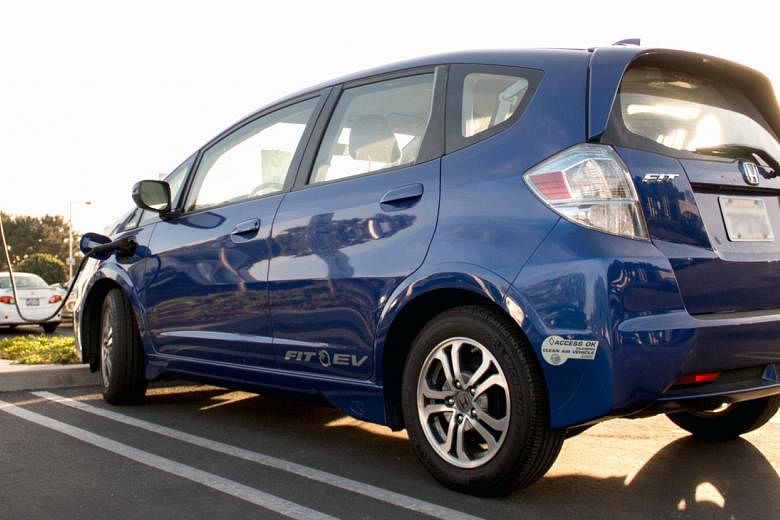DETROIT • The car and electric power are charging forward together again.
At the dawn of the automotive age, Henry Ford and Thomas Edison worked on projects involving motor vehicles and the electricity that made them possible.
Soon, Ford was cranking up his assembly lines while Edison, with Ford in his employ early on, became a prime mover behind the power grid and the public utility companies that built it.
Now, those utilities must not only supply the huge amounts of electricity that modern car factories consume, but also fuel the increasing number of electric vehicles.
If that electricity is not generated with minimal carbon emissions and at a reasonable cost, the advantages of electric cars are diminished.
And because most owners charge their vehicles in the early evening when they get home from work, demand peaks can be a significant problem.
Thus, car-makers and utilities are again working hand in hand to ensure a good supply of clean, inexpensive electricity, while developing strategies for charging that do not overload circuits at peak periods.
Honda and Southern California Edison have taken a step in that direction.
They have developed a program, Honda SmartCharge, that helps owners charge vehicles when the greatest amount of renewable energy is available on the grid and when electricity prices, which can fluctuate significantly, are lowest.
The system relies on the vehicle's built-in communication ability and a software platform developed by eMotorWerks, a subsidiary of Enel, a multinational public utility.
SmartCharge is in beta testing with Honda Fit owners in Southern California Edison's service area.
Car owners download the free app and select preferred charging times. The software computes the best time to charge, considering the owner's preference, how the electricity is being generated and pricing signals from the grid.
Push notifications remind the owner to plug in when the time is right. Should the wholesale cost of electricity spike while the car is charging, the software can interrupt the process until the price drops.
Owners can opt out of a charging time if it does not suit their schedule and they can opt out of the program at any time.
The program helps the Fit owner manage energy costs and currently offers a US$50 (S$69) bonus once five charging sessions have been completed. Additional US$50 bonuses are awarded for every two months of participation.
The effort helps Southern California Edison too, by reducing demand at peak times.
Smart charging is almost certain to expand as the electric fleet grows and utility companies seek to balance demand.
BMW, which has a pair of all-electric models, is testing a charge-scheduling program, working with Pacific Gas And Electric in the Bay Area. It is limited to 350 vehicle owners at the moment.
General Motors also envisions an electric-powered future and is laying the groundwork for it. In 2007, it partnered the Electric Power Research Institute and utility companies to develop strategies for large-scale adoption of electric vehicles.
The car-maker is now collaborating with Consumers Energy, a Michigan public utility, in a pilot program that uses the OnStar communication system in GM vehicles to enable charging when electricity rates are low.
"Done right, electric vehicles present an enormous load growth opportunity for utilities," said Ms Britta Gross, director of advanced vehicle commercialisation policy at GM.
"Charging can be managed in such a way that it is advantageous to the grid, such as when the wind is blowing or the sun is shining, and it can be done without building new power plants."
NYTIMES

